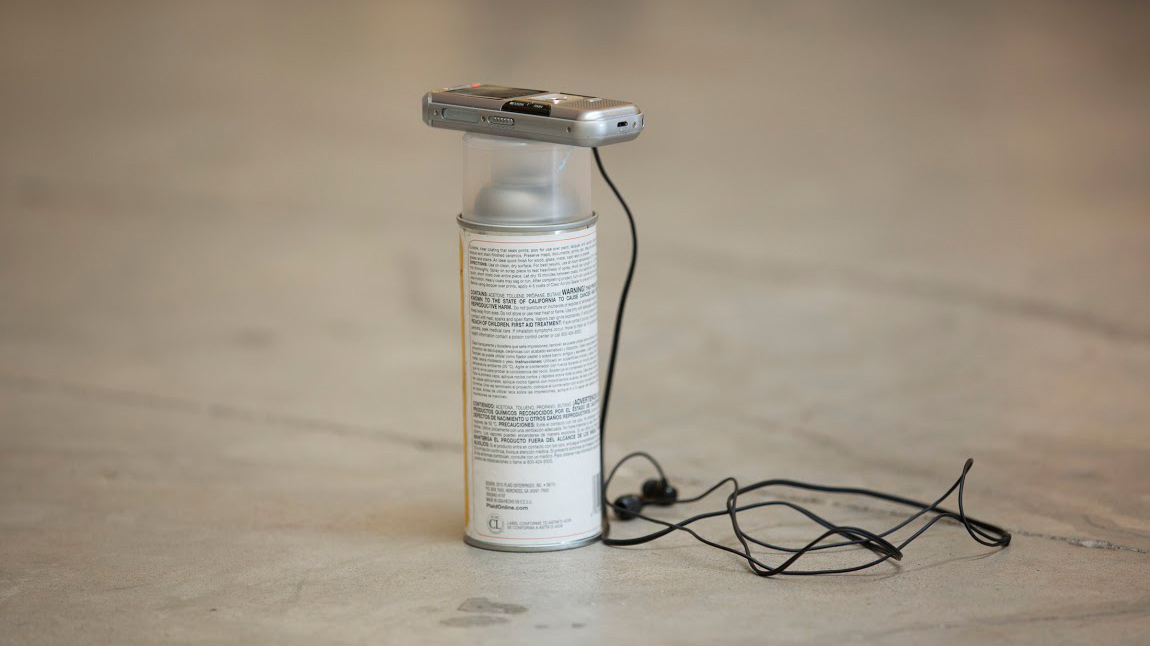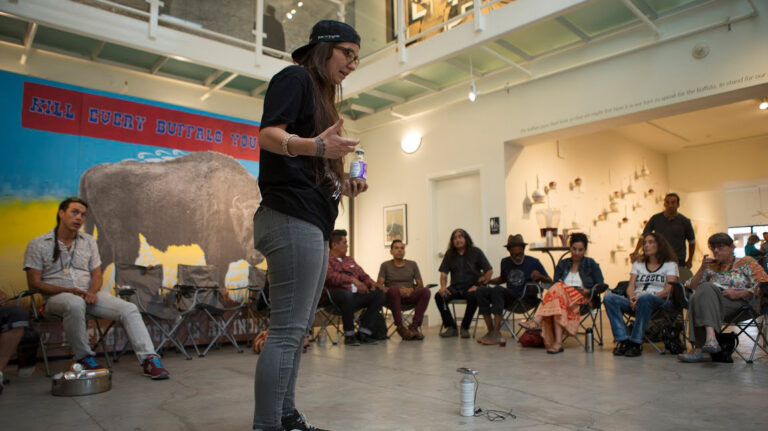Culture Shock: Authenticity On The Airwaves
Broken Boxes Podcast Amplifies Unrepressed Narratives


L to R: Ginger Dunnill, Nicholas Galanin, Merritt Johnson, and Sterlin Harjo. All artists who have shared their stories on Broken Boxes.
Kate Russell

The Broken Boxes logo, designed by participating artist Jesse Hazelip
Courtesy of Broken Boxes

Ginger Dunnill speaks at last year’s Broken Boxes exhibition in Santa Fe.
Kate Russell








